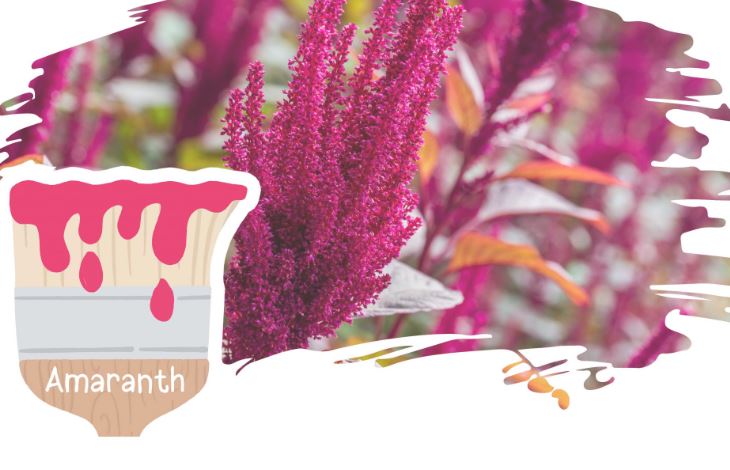Amaranth
The color amaranth takes its name from the plants of the same name. It is a shade of red.
Incidentally, sources don’t seem to agree on what exact hue is considered amaranth. One source claims that the name refers to a shade of pink that’s actually the stereotypical color of bubblegum. Others suggest that the name refers to a darker shade that’s more similar to the eponymous plant. Whatever the case, the name and the color are definitely unique.
Australien
Australien is such an obscure color that it doesn’t even have a Wikipedia article. In fact, if you search for “Australien” online, you’re more likely to find hits about Australia. That’s because “Australien” is actually the German name for Australia.
As for the color, the 1897 fashion guide House Decoration gave the hue its name. The guide stated that the colors of the Outback inspired the name. The Outback, as you may know, is the large desert that makes up much of Australia’s territory. Like many deserts, the Outback has a brownish hue. However, the Outback’s brown is also somewhat reddish.
According to the aforementioned guide, the color was apparently quite popular in Victorian England. Many women’s dresses had the color.
Banan
Banan may be one of the rare colors on this list, but it’s probably the most delicious. As you can probably tell, it takes its name from the banana. Interestingly enough, it also has a very fun alternative name: “Banan-appeal”. Yup: you read that as “banana peel”! Incidentally, sources state that this shade is similar to the color you find within the banana peel, hence the name.
Oh, and by the way, the name “banana” itself may have come from an Arabic word meaning “finger”. Maybe this entry will make you crave a banana sooner rather than later.
Burlywood
Burlywood is one of those rare colors that have an exotic origin. It’s a shade of brown that gets its name from a tree native to India. In particular, the hue refers to the shade of brown seen in wood made from that tree. The tree in question, Butea frondosa, can also be found in the rest of South and Southeast Asia.
Celadon
If you’ve played Pokémon Red and Blue or their remakes and sequels, you may be familiar with this color. That’s because Celadon City is one of the cities in the games.
Celadon is a light shade of green that experts believe first originated in China. This is because celadon is the color of the most familiar form of jade. Indeed, if you think of things made from jade, they would typically have a celadon color.
Jade is not the only thing that can come in celadon, however. Many Korean porcelain ceramics also had this color. Indeed, “celadon” became a general term for Korean ceramics even if they came in other colors. That association was that strong.
Drake’s-Neck
No, this color is not named after the Canadian rapper or his neck. No, it has nothing to do with either the Toronto Raptors or the Hotline Bling meme. It does have to do with dinosaurs… sort of. We’ll explain why in a bit.
Drake’s-Neck is a pretty interesting name for a shade of blue. What does it have to do with dinosaurs? It does so in the most tenuous way possible. The color is named after a duck. Specifically, a male duck. A drake is a male duck, and many drakes have a dark blue color somewhere on their bodies. Those blue areas are what gave the color its name. And where do dinosaurs come in? Well, ducks are birds, and as you may have learned in school, birds descended from dinosaurs. In fact, many biologists say that birds are dinosaurs. So maybe you could say the color is named after a raptor, after all.


